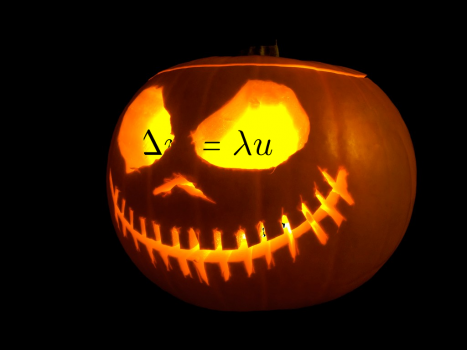
Spectral Theory 2021-2022
August 21, 2021
Warning! This page is about a previous academic year. I don't teach this course currently.
Spectral Theory is a very powerful tool in many areas of mathematics, from the purest to the most applied.
Its roots are a combination of linear algebra, topology and (real or complex) analysis, and its flowers are numerous: commutative algebras, non-commutative geometry, functional analysis, quantum mechanics, dynamical systems, microlocal analysis, partial differential equations, quantization, etc. It deals with the analysis of “operators”, which can be viewed as matrices of possibly infinite dimension.
The course on Spectral Theory belongs to the Master 2 maths fondamentales from Université de Rennes 1, in collaboration with Université de Nantes and Centre Henri Lebesgue. A similar course will be given at the University of Nantes.
You may wonder why the word « Spectral » or « Spectrum ». I wrote an easy reading article on this, which can serve as an introduction to the course (and from which the Halloween image is borrowed).
The course will cover quite completely the elementary aspects of the theory of « unbounded operators », plus additional subtleties concerning the famous « self-adjoint » operators, culminating with the celebrated spectral theorem(s). It is naturally followed by the course on Microlocal analysis, which will define an important class of operators: pseudo-differential operators.
The goal of this course is to provide the student with a good and workable account of spectral theory in order to apply it in as many fields of research as possible, not only in mathematics (from geometry and (deterministic or stochastic) dynamical systems, to, of course, analysis and applied mathematics), but also in other sciences (physics, biology, etc.).
Schedule
Tuesdays and Fridays, 16h15-18h15, or 10h15-12h15 (please check with the ENT.) Course starts Tuesday, September 7th, 16h15
Homework and exams
The course is quite dense, and students are required to learn it with precision, helped by several exercices given along the course. Preparatory reading is recommended, see below. The exam consists of one homework and one final written examination.
References
A dirty draft of the full lecture (in French) is available. It contains the basic material, but you should practice by reading other documents and doing exercises.
More details on the course and useful exercises can be found in the recent book by Cheverry-Raymond, see https://hal.archives-ouvertes.fr/cel-01587623, which we roughly follow. Many references to this book are included in the draft, so it is a must-have for following the course.
Useful and synthetic documents can be also found on Zied Ammari’s page, or Christophe Cheverry’s page.
Other interesting books are
- Spectral Theory and its Applications (Bernard Helffer)
- Perturbation Theory for Linear Operators (Tosio Kato)
- Functional analysis (Michael Reed & Barry Simon)
